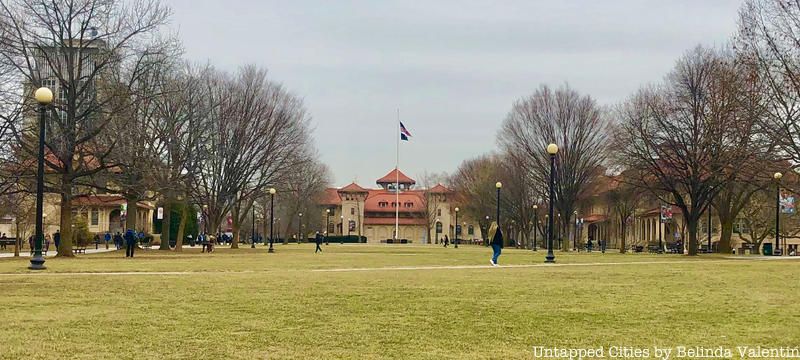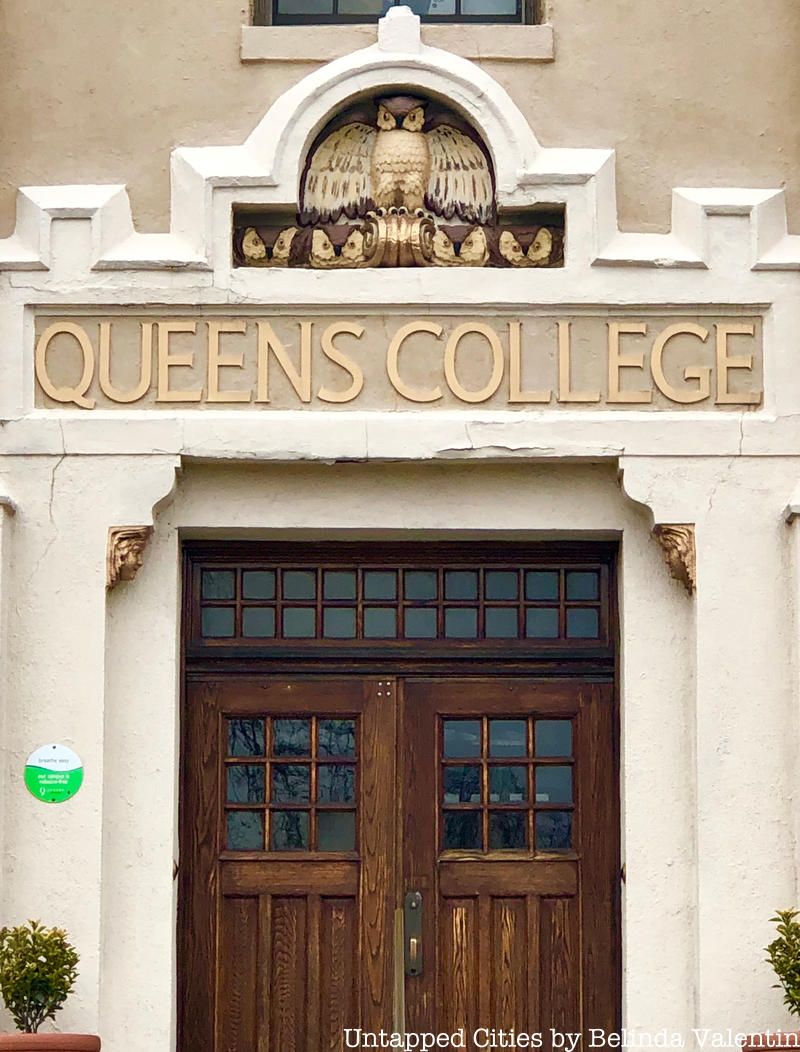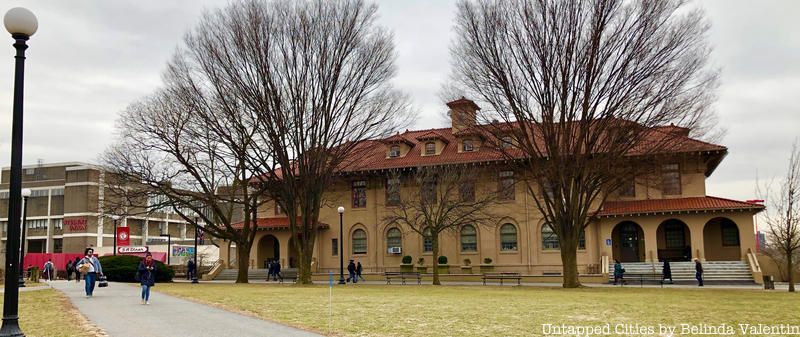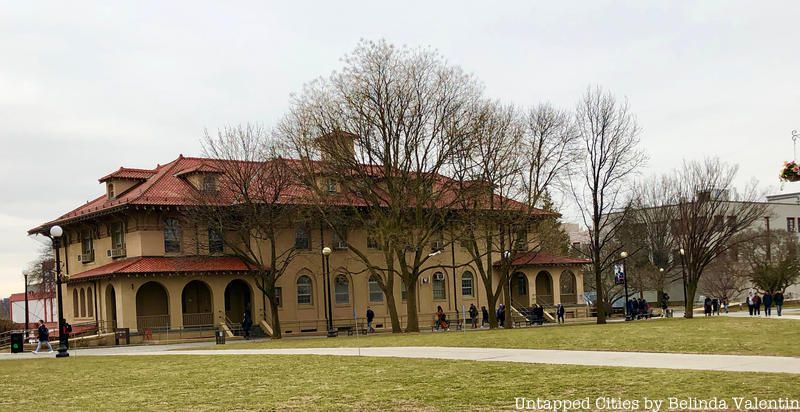Last Chance to Catch NYC's Holiday Notalgia Train
We met the voices of the NYC subway on our nostalgia ride this weekend!


With fall and the back to school season in full swing, Untapped Cites is uncovering the hidden and little known past uses of some of New York City’s colleges. Today we look at the Queens College campus, which has had several past uses including the Parental School for “incorrigible boys and truants,” which closed after a scandal. Queens College continues to use several Mission Revival style buildings from the earlier institution.
In the early 1900s, the New York City Board of Education decided to establish a Parental School. The purpose was to place troubled students in a residential institution that would perform the role that the boys’ parents were considered either unable or unwilling to perform.
The City purchased a farm for the Parental School in an area of Queens called Flushing Hill. The farm’s previous owner was Kane & Wright, a “manure dealers” firm. In an interesting coincidence, the company’s partner Robert J. Wright had been New York City’s first Department of Correction commissioner in the 1890s.
The new school opened in 1909 with a main administration building, three dormitories referred to as cottages, and a power plant. They were designed in a Mission Revival style by C.B.J. Snyder, Superintendent of School Buildings. In the 1920s, more cottages were added that followed Snyder’s original plan. The school buildings were designated by letters.

Students received classroom instruction but also performed farm work, learned trades, and engaged in military drills.
However, by the 1930s there was a disconnect between the rhetoric and the reality.
In 1934, the new mayor, Fiorello LaGuardia, received letters alleging mistreatment of students at the Parental School. Although the school denied the allegations and a Board of Education report cleared the school, a Grand Jury found evidence of widespread problems and recommended the school be completely reformed or closed.
Among the Grand Jury’s findings: some staff engaged in “entirely unwarranted use of corporal punishment;” the “regular school work is pathetic;” and the boys were served “badly prepared food” with “an almost complete lack of appreciation of the food requirements of growing boys.”
Soon after, the Parental School closed.
The following year, 1935, the New York City Children’s Hospital moved to the Parental School campus from Randall’s Island, where its building was demolished to make way for the Triborough Bridge.
The hospital, which served so-called “mental defectives,” closed in 1936 and its patients were sent to state institutions. With the Parental School campus available and in the face of heavy lobbying by Queens officials, the City agreed to establish a new public college on part of the site where the Parental School buildings were located (new schools were built on other portions of the property).

Queens College opened in 1937. While it continues to use several of the original Parental School buildings, over time some others were demolished to make way for new buildings.
One of the lost buildings, originally designated “A” was renamed Walt Whitman Hall in 1939. Coincidentally, 100 years earlier, in 1839, its namesake, then only 20 years old, taught for several months at Jamaica Academy, a local one-room school house.
A few years ago a local historian determined that the site of Jamaica Academy was the present day location of the Queens College Student Union building. Queens College has placed a plaque nearby honoring Whitman’s connection to the site.
 Delaney Hall
Delaney Hall

Colwin Hall
While the Parental School failure was a sad chapter in the history of this site, it is bookended by happier associations with Walt Whitman and the Jamaica Academy preceding it, and Queens College following it which put its architectural legacy to positive use.
Next, read about the forgotten past of Bronx Community College, NYU’s former University Heights campus.
Subscribe to our newsletter